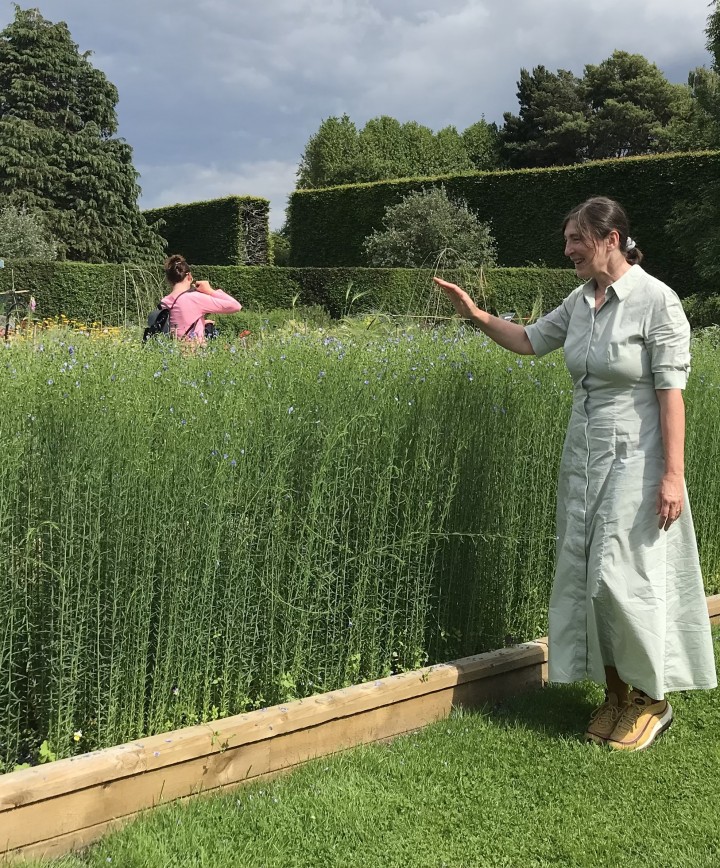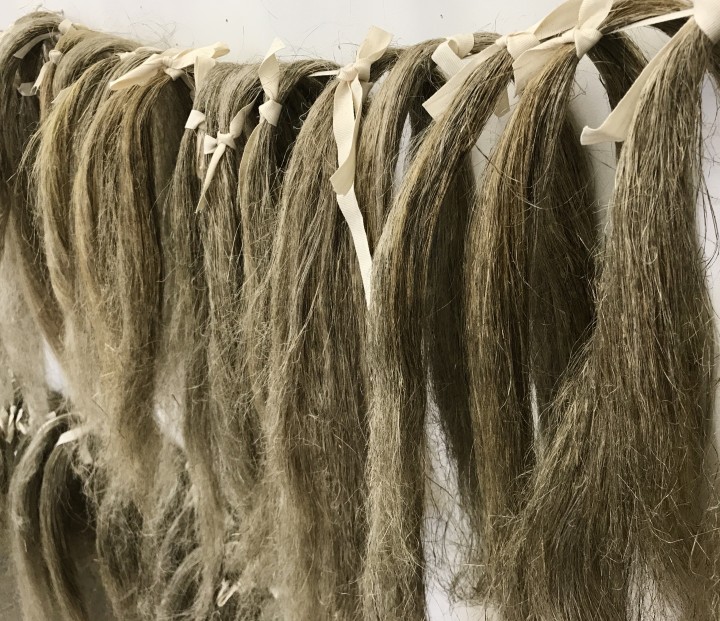Scottish Art News
Latest news
Magazine
News & Press
Publications
Naturally It Is Not
By Greg Thomas, 27.08.2021
.png)
In July 2021, the death of Glasgow-based poet Callie Gardner deprived Scotland’s literary scene of a complex, compassionate, and politically probing voice. In their 2019 poem cycle Naturally, It Is Not, Gardner explored the entwinement of nature and culture over a four-season sequence attuned to the disruption of equinoctial cycles by man-made climate crisis, while forging glimmers of utopian (and apocalyptic) prediction:
let glasgow compost: a chance for this black swan or
falling star to return to the earth as wormwood
wormfood. this is no diss; I want to be here til the
last days, getting eaten by the maggots with the best
of us.
Alaya Ang and Hussein Mitha’s Plotting (Against) The Garden is dedicated to Gardner’s memory, and is similarly alert to the vested interests bound up in the nature/culture boundaries that frame our modern sense of the garden, and of its cultural, religious, and emotional significance. A sound work in three phases, it plays through speakers installed along the inner walls of Beacon Tower at Edinburgh Sculpture Workshop, a space informed by the industrial forms of signalling towers and factory cooling vents (the location itself suggests the artists’ resistance of notions of natural space).
 Christine Borland with Flax at RBGE.
Christine Borland with Flax at RBGE.
Ang and Mitha’s cycles, I. Cosmic Radio, II: The Imprint of the Sun, and III: Dreaming the End of Dreaming, play during morning, noon, and afternoon respectively, with a soundtrack provided by Cindy Islam. Looped and echoed strings abound, ricocheting off a deep steady wall of drone which modulates beautifully in the final, music-only component. Enmeshed in the sound are spoken contributions from writers Armaan Verma and Martha Adonai Williams, as well as from the two artists themselves. We are placed in a phantasmic auditory environment, a realm of counter-mapping and imaginary plotlands, where plants seem to overthrow the taxonomies of western science (“plantlife cannot be subsumed under the zoocentric”) while revolutionary human networks and histories are traced over imperial geography. “I crawled back into paradise, picked up my tools, and started my work,” announces one early voice, “leaving the city limits in my car, leaving behind the botanical gardens, the orientalist pagodas, the neo-classical landscapes, the floral stone nouveau architectural adornments.” Don’t expect fully unfurled critique here—this is a work set in a space apart from material reality, albeit drawing from the wells of possibility beneath its cracked topsoil.
Over at Edinburgh’s Royal Botanic Garden (RBGE), in Inverleith House, Christine Borland’s In Relation to Linum explores the lifecycle of flax, while unpicking the plant’s relationship to conceptions of femininity, fecundity, and matriarchal ritual. Flax produces linen, one of the most ancient forms of textile; an illustration of the plant also appeared in Hortus Medicus Edinburgensis, the first horticultural catalogue printed in Scotland, which detailed the 1670 collection of what would become the RBGE. Borland has been cultivating a flax patch in the garden’s grounds that will soon form part of the indoor exhibition, although this preparatory work was somewhat compromised by Covid-19. The artist overcame the vicissitudes of lockdown, however – when the Botanics briefly closed – by encouraging members of the public to grow their own linum usitatissimum alongside her, sharing key moments in the lifecycle on social media, using the hashtag Lineation.
 Flax Fibres photographed at Christine Borland's studio.
Flax Fibres photographed at Christine Borland's studio.
Amongst the most engaging works on display here are the little sequence of watercolours on the ground floor, showing a green silhouetted figure with red-and-yellow flower-patterned shield – a sort of vivacious pagan fertility symbol – arraigned in poses suggesting functional movement abstracted into dance. They have names like The Flax Sower, Water, The Flax Sower, Weed, and The Flax Sower, Winnow. Upstairs, meanwhile, we find the fruits of Borland’s collaborative work, Home Herbarium Specimens, a selection of flax specimens pulled and pressed at homes across the country by “growers-turned-female-field-botanists.” Arranged in zig-zags, runes, and arcs across the wall, they seem to form a lost phonetic script.
If this suggests some arcane symbolic potency to the cultivation process, Borland’s self-portrait, The Flax Sower’s Cloak, showing her in a rough-hewn linen cloak designed to record the movements of her soil-work, deepens the ritual or priestess-like connotations of flax-growing. (Throughout pre-Christian history, various goddesses were endowed with a dominion over weaving associated with soothsaying or foresight, from Isis to the Three Norns of Norse mythology.) Downstairs, a set of film-based works transforms the sower’s movements into waves of sparkling light gradually resolving themselves into human bodies, as if the digging, winnowing, and watering were unfolding on some astral plane.
Whereas Ang and Hussein’s work undercuts conceptions of the natural – of gardening as a point of access to timeless truth or pattern – Borland offers a nuanced celebration of horticulture as a means of cultivating community and (magical?) empowerment amongst women. The fruits of these two very different shows offer a nourishing combination.
Alaya Ang and Hussein Mitha’s Plotting (Against) The Garden is exhibited at Edinburgh Sculpture Workshop until 24 September | Christine Borland, In Relation to Linium is exhibited at the Royal Botantic Garden Edinburgh until 3 October. Both are running as part of Edinburgh Art Festival.




